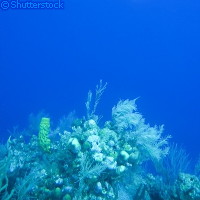International help for the Galapagos coral reefs
A major international project led by the UK's University of Southampton will result in better protection for some of the world's rarest coral reefs around the Galapagos Islands in the Pacific Ocean, while maintaining the economies that depend on them. The three-year project, Galapagos Coral Conservation: Impact, Mitigation, Mapping and Monitoring, is part of the Darwin Initiative, an international programme to help countries lacking the necessary financial resources to protect their biodiversity. The results of the project are now published in a special edition of the peer-reviewed journal Galapagos Research. The Galapagos Islands were made famous by the naturalist Charles Darwin in the 19th century when he visited and studied them. His observations on their wildlife and biodiversity eventually became part of his groundbreaking book, On the Origin of Species by Means of Natural Selection. The islands lie nearly 1,000 km off of the coast of Ecuador (to which they belong). The aim of the project was to help the government of Ecuador to protect the last remaining extensive coral reefs around the northern Wolf and Darwin islands while not harming the marine economies that are vital to the people of the area. The Galapagos Islands still teem with biodiversity. Their remaining coral reefs include thousands of species, including many rare corals, and the reefs are also home to a wide range of sea creatures, including thousands of turtles, dolphins, sharks and tuna. However, in the past 30 years the reefs have been strongly affected by climate change. In the period between 1982 and 1983, extreme weather conditions caused by the El Niño effect reduced the reefs by 95%, and in the period from 1997 to 1998, an increase in sea surface temperature caused by ocean warming caused more damage. The project is the most extensive so far carried out for coral reef protection, and it used innovative mapping and assessment techniques to identify particular areas of damage. It brought together the fishing and tourism industries in the region to discuss ways in which they can continue to thrive while causing less damage to the reefs. Some of these were quite simple innovations such as the creation of permanent mooring buoys to avoid causing damage to coral reefs by anchors. Professor Terry Dawson from the University of Southampton's School of Geography said, 'These significant findings greatly improve our knowledge and appreciation of the value and current condition of the Galapagos's northerly coral communities and establish conservation measures and stakeholder commitments to protect these valuable habitats. 'This step forward demonstrates how relatively modest external aid can empower applied marine research and lead to management policy. Such steps are critical if natural ecosystem function is to be conserved to maintain Galapagos's intrinsic value and contribution to the wellbeing of future generations.' Many organisations were involved in the project including the Charles Darwin Research Station, WildAid, Conservation International, and the Galapagos National Park Service.
Countries
United Kingdom



